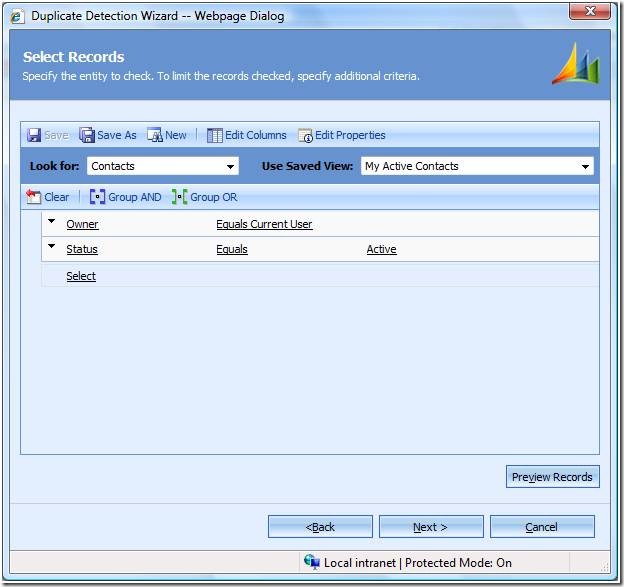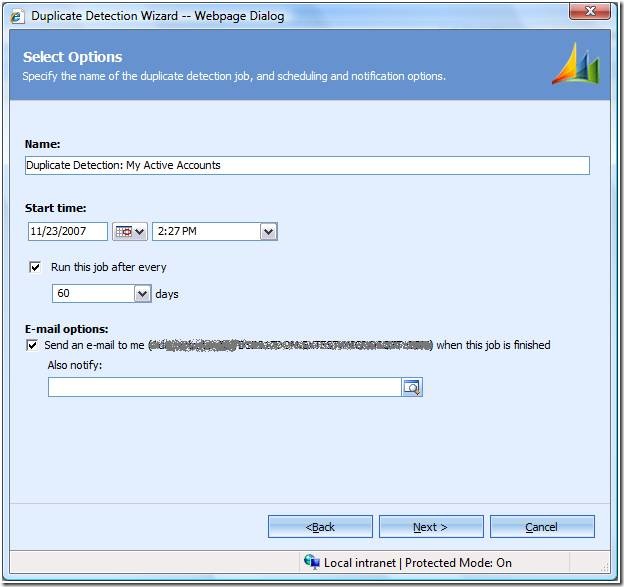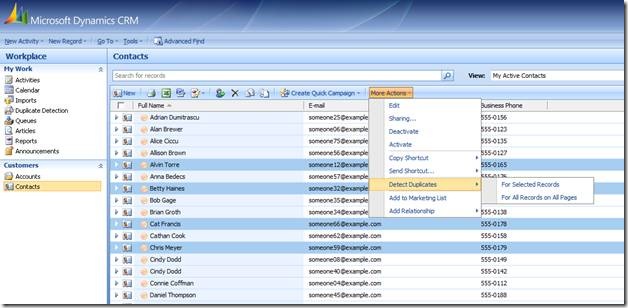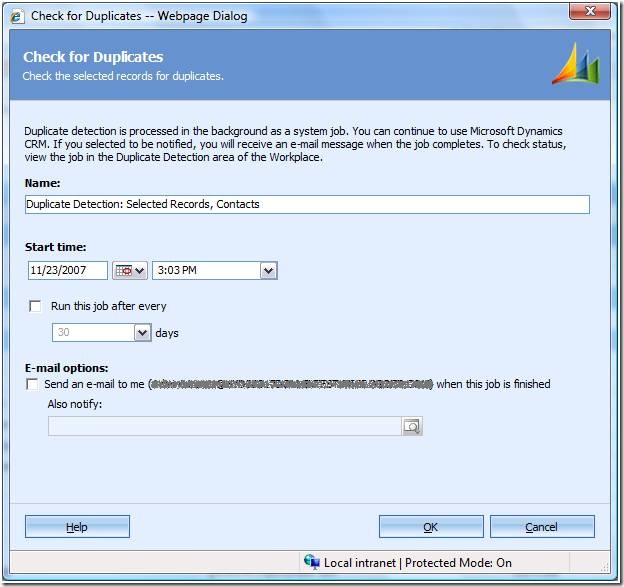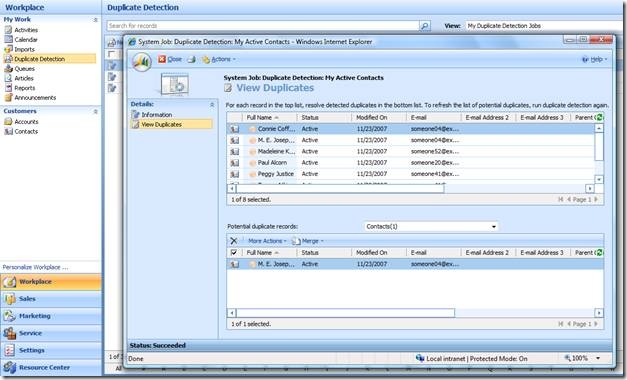CRM 4: System-wide Duplicate Detection
Here I am continuing the duplicate detection story of CRM 4.0 with a new aspect of this feature. Organizations face a common problem where in spite of several policies and guidelines in place users end up entering duplicate data in MSCRM system via data import or data generated during many internal operations or simply knowingly creating duplicate records. Creating duplicate records at any point of time might be crucial but this ends in a lot of duplicate data in system which can affect sales, marketing and auditing of the organization. System-Wide Duplicate detection feature in Titan solves this problem and empower users to find duplicates in a part or all the records of an entity in the MSCRM system.
System-wide duplicate detection is an asynchronous type job and it detects all the duplicates in the system for the given records. System-wide duplicate detection can be run on selected records of any entity or records under any specific user query or all the records of that entity. I will cover each of these scenarios one by one.
System-wide duplicate detection wizard can be launched from Duplicate Detection option under Tools menu in MSCRM or Workplace > Duplicate Detection grid New button. First page of this wizard is welcome page and informs user about the capabilities of this wizard.
Proceed to Select Records page to select the entity on whose records you are going to run the duplicate detection. All the entities that have one or more duplicate rules published in MSCRM system will be listed under Look for dropdown on this page. This interface is standard Advance find interface and you can either select any existing view to run the duplicate detection on all the records of that view or can create a custom query also. You can also see the records identified according to the selected query by clicking Preview Records button.
Now Proceed to Select Options page for giving name to your job and selecting the time at which you want to run this job. This duplicate detection job can be run recursively also by checking “Run this job after every” check box and providing number of days in the days drop down box. This feature is very useful in scenarios where duplicates are creating regularly in MSCRM system and you want to keep track of them after every few days or months. You can also choose to send an email to you and others on completion of this job.
Now go next to Start Duplicate detection Job page and submit the job. Your job will be submitted for processing at the time provided by you in the wizard.
Duplicate Detection can also be launched from any entity grid for which one or more duplicate rules are published. While running duplicate detection on entity grid you can choose either to run duplicate detection for manually selected records or for all records under that view. For running duplicate detection for selected records first select one or multiple records on grid and go to grid view of desired entity and launch duplicate detection dialog from More Actions > Detect Duplicates > For Selected Records. This will launch Check for Duplicates dialog which is same as Select Options page of System Wide duplicate detection wizard. Just fill your options and your job will be submitted for processing.
For running duplicate detection for all records in any view select More Actions > Detect Duplicates > For All Records on All Pages.
You can see your duplicate detection jobs under Workplace > Duplicate Detection grid or Settings > Data Management > Duplicate Detection Jobs grid. Here you can check the status of your jobs and see the duplicates found in any duplicate detection job. Open the system form by double clicking and go to View Duplicates under Details section on left hand side.
This form gives user the power of editing, merging and deleting the duplicate records which is essential for data cleansing.
Some noticeable points about System wide Duplicate detection are
a) Duplicate Detection runs for all the published rules for any entity and there is no concept of choosing duplicate rules while doing duplicate detection.
b) Duplicate detection wizard can be run on only one entity at a time. Though you can run multiple jobs for different entities.
c) There should be duplicate rules present as published for the entity you want to run duplicate detection.
d) User level privileges apply while showing duplicate records to users.
This story will continue and in next post I will discuss security model of duplicate detection.


